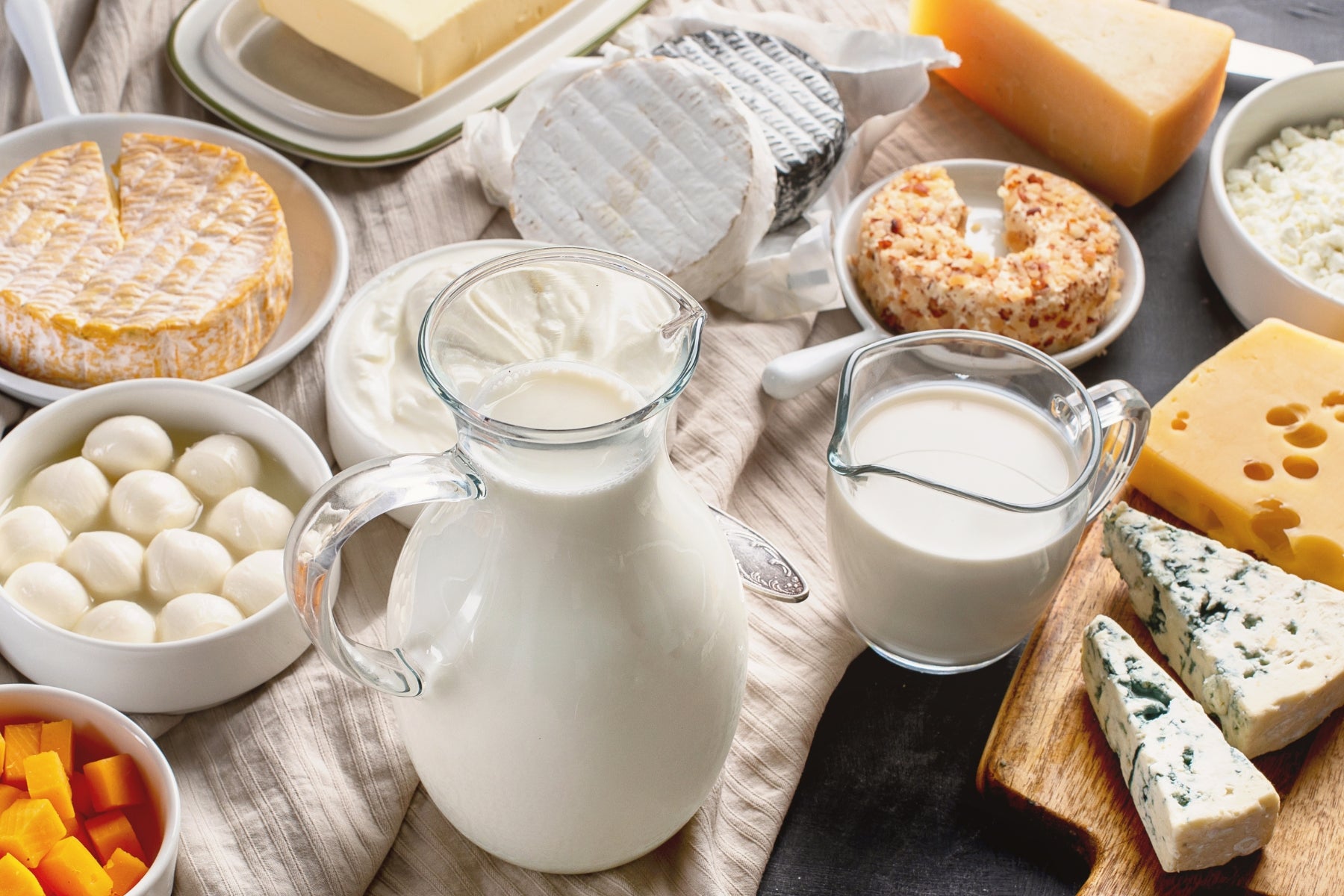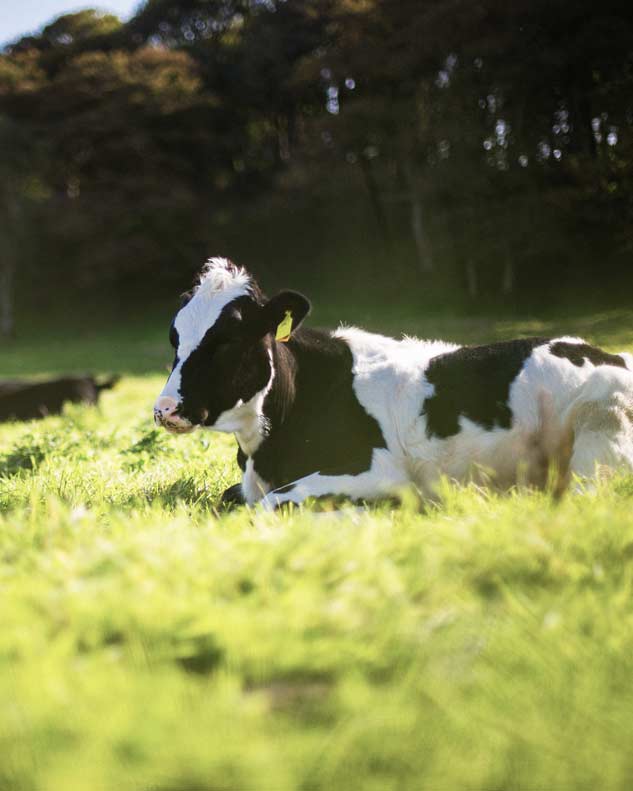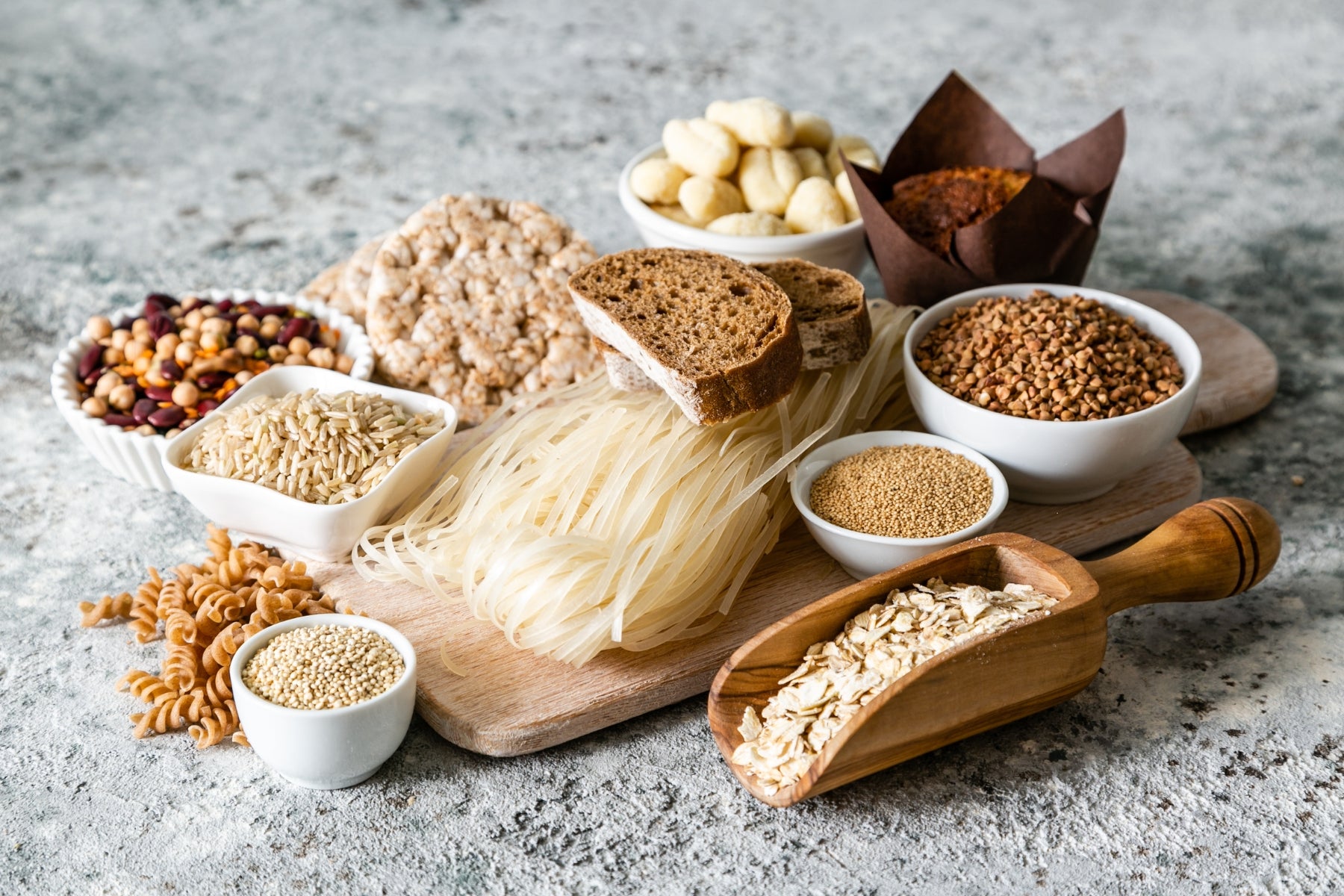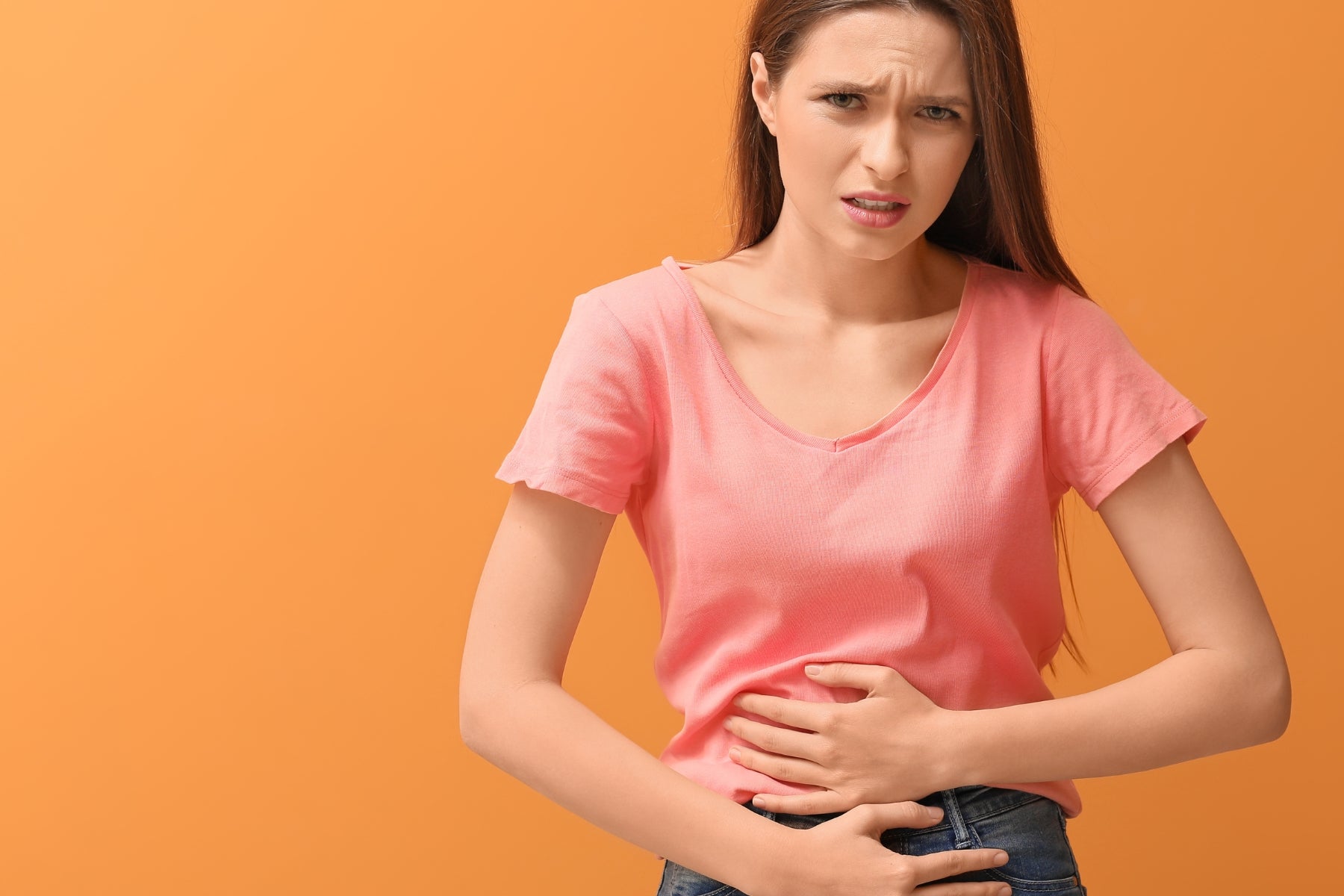
Lactose intolerance and nutrition
Lactose intolerance has existed for as long as humans have existed. Due to the ubiquity of dairy products in our society, it seems to have been forgotten. Find out here how a lactose intolerant diet is still possible.
The most important facts at a glance:
- Lactose intolerance means that milk sugar cannot be metabolized correctly by the body.
- Lactose is in all animal milk and in many foods processed from it - such as yogurt or soft cheese.
- The majority of the world's adult population is lactose intolerant, only people in Central Europe have developed a tolerance over time.1
- Even people who are not affected by lactose intolerance can eat without dairy products without any problems.
- Plant-based drinks are an ideal lactose-free alternative to conventional milk.
The right diet for lactose intolerance is not always so easy to implement in everyday life. Especially with processed foods, the question of lactose content often cannot be answered immediately.
This article provides clarity and answers all your unanswered questions about lactose intolerance and how difficult or easy it actually is with the diet.
What does lactose intolerance mean?

If you are lactose intolerant, you cannot process the milk sugar (lactose) contained in milk and milk products. Lactose intolerance is therefore often called milk sugar intolerance.
The reason for this is the lack of enzyme "Lactase”. Lactase divides the milk sugar so that it can be absorbed in individual parts in the blood. If the enzyme is not available or if it is not produced in sufficient quantities, the consumption of lactose -containing foods can become symptoms such as Abdominal pain, diarrhea or nausea lead.
The majority of the global adult population is affected by lactose intolerance. Only people with European roots have built up tolerance to milk sugar due to the domestication of cows and the long dependence on dairy products.
It is therefore a widespread misconception that lactose intolerance would be an illness or an exceptional case. It is rather that People without lactose intolerancethat form the exception.
How lactose intolerance is diagnosed
In the vast majority of cases, those affected notice on their own whether they are lactose intolerant. They always suffer from the symptoms described after eating foods containing lactose or do not get them if they do not eat any dairy products.
In these cases, lactose intolerance can be strongly assumed and the diet should be adjusted accordingly.
To be absolutely sure, a medical test - a so-called "oral lactose tolerance test" - can be carried out. This involves swallowing 50 g of pure lactose and then measuring the hydrogen content in the breath and the rise in blood sugar levels.
If the lactose is not already broken down by lactase in the small intestine, it reaches the large intestine where it is metabolized by bacteria. Hydrogen is released during this process.
If the hydrogen content in the breath rises above 20 ppm, but the blood sugar level remains below 20 mg/dl, we can speak of lactose intolerance.
Incidentally, common lactose intolerance has nothing to do with a allergy to do with an allergy. Allergies are reactions of the immune system to foreign or potentially dangerous substances.
How can you eat if you are lactose intolerant?
A lactose-free diet excludes all dairy products in which lactose is still present. This includes in particular milk (whether cow's milk, goat's milk or from other animals), yoghurt and some types of cheese.
Hard cheese and butter only contain very small amounts of small amounts of lactosewhich is why they are tolerated by intolerant people.2
All other foods - animal or plant-based - are suitable for the 3
A 2017 study involving over 1900 women suggests that the consumption of certain dairy products can significantly increase the risk of developing breast cancer.4
The U.S. Department of Agriculture recommends 3 servings per day (e.g. 3 glasses of milk) of dairy products5 However, this does not automatically mean that you should eat lactose-free diet disadvantaged or that a diet without dairy products is unhealthy.
Bear in mind that these authorities always have to consider the needs of the dairy industry on the one hand and the dairy farmers on the other. Many jobs depend on milk as an end product and to no longer recommend dairy products would be a serious blow to society and the economy.
List of lactose-free foods
The following list will give you a better overview of what you can still eat if you are lactose intolerant:
- Bread and baked goods
It doesn't matter whether they are cereals containing gluten or not. As long as no dairy products have been processed in it, it cannot contain lactose. - Fruit and vegetables
All purely plant-based foods are naturally lactose-free. However, we recommend taking a close look at the ingredients of processed ready meals with fruit or vegetables. - Eggs
Chicken eggs, just like eggs from other animals, do not contain lactose. Some breakfast cafés stir cream into their scrambled eggs, which means they are no longer lactose-free. However, this must be indicated on the menu so that there is no danger for lactose-intolerant guests. - Meat and fish
Meat, fish and poultry are always lactose-free in their raw form and are completely safe to eat if you are intolerant. This can no longer be guaranteed for processed sausage products and baked meat with breading - although the lactose content is usually very low in these cases. - Beverages
You can drink everything from juices to tea and coffee despite being lactose intolerant. Milk (also in tea or coffee) and buttermilk clearly make no sense unless they are lactose-free. - Wine and beer
Wine and beer are safe to consume. - Alcoholic beverages
Other alcoholic drinks (such as vodka or schnapps) do not contain lactose either. The situation is different with mixed cocktails that contain cream or similar dairy products according to the recipe - piña colada would be a classic example of this.
As a rule, it is not too difficult to find the foods containing lactose from lactose-free food. Let's remember that lactose is the "milk sugar". This means that anything that does not contain milk or dairy products can be eaten without worry.
It gets a little tricky with processed dairy products such as butter, clarified butter or ghee. These foods contain little to no no lactose which is why they can usually still be eaten by lactose intolerant people without causing discomfort.
The plant-based alternative to butter would be margarine. This is always lactose-free, but as butter is also unproblematic, you have a free choice here.
Alternative to milk
If you don't want to miss out on your muesli for breakfast or your daily cappuccino, you can use plant-based milk as an alternative. The best-known plant-based drinks are...
- Soy milk
- Almond milk
- Oat milk
- Rice milk
- Coconut milk
Depending on which flavor you prefer, one of these options is ideal alternative to milk. There are now also plant-based yogurts made from these plant-based drinks.
With Saturo for example, we also use soy as the basis for our drinkable meals. So that they are also suitable for vegans without any problems.
Another reason why more and more people prefer plant-based milk alternatives is that they are much more climate-friendly are much more climate-friendly. According to a study conducted by Oatly in 2017, oat milk actually consumes 80% less greenhouse gases and 80% less land area than would be the case with cow's milk.
In the case of soy milk, the cycle is even partially counterproductive. Soybeans are mainly grown to feed cattle. In other words, the cow must first be fed a considerable amount of soy - which requires a lot of water - in order to produce milk.
By way of comparison, a glass (250 ml) of cow's milk requires around 120 liters of water. A glass of soy milk requires only 5-10 liters.
The detour and thus the waste of resources if we were to consume plant-based milk from soybeans directly.
A nutrition plan can help
The right diet plan can help with lactose intolerance. With a clearly defined plan, it is almost impossible to eat the wrong foods.
As long as you stick to the foods on the list above, you are always on the safe side. It doesn't matter whether you follow the lactose-free diet with intermittent fasting, a gluten-free diet or other diets.
Many people who would like to lactose-free diet even though they are not affected by an intolerance, only start on a daily basis. This has the great advantage that you can test how well or badly lactose-free foods affect your well-being.
By the way: If you want to avoid drinking meals of Saturo you no longer have to worry about proper nutrition if you are lactose intolerant. Our drinks are purely plant-based and replace an entire meal - large or small.
Lactose-free dairy products
Many manufacturers of dairy products now also offer lactose-free versions of their foods. Lactose-free milk and lactose-free yogurt are among the best-known products.
At this point, the question arises as to how lactose-free milk is produced.
This is quickly explained: in order to lactose-free milk the enzyme lactase is added to "normal" milk. This enzyme breaks down the lactose into two different simple sugars - glucose and galactose.
In this process, virtually exactly what happens in the small intestine of lactose-tolerant people takes place. Lactose-free milk therefore tastes slightly sweeter than conventional milk because the two simple sugars are sweeter than the lactose.
Other lactose-free dairy products such as yoghurt or various types of cheese are either made from this previously processed milk or the enzyme lactase is added during the production process.
Conclusion
The right nutrition with lactose intolerance is basically not a major hurdle. If you delete all dairy products from your nutrition plan, you no longer have to worry about lactose intolerance.
Every person can feed on lactose -free food, regardless of whether there is an intolerance or not. The list contained in this article with Lactose -free food Help you make the correct choice and to master the change in diet more easily.
If you suffer from lactose intolerance, but do not want to do without animal milk at all, you can help with lactose -free milk products. The dairies are increasingly responding to the needs of consumers in order to enable “normal” nutrition despite lactose intolerance.
However, the vegetable alternatives such as soy milk or oat milk would be better for the climate.
Lactose -free drinking food is an excellent alternative, in order to cover the daily nutrient requirement without indigestion. These specialized products are ideal to support a balanced diet and at the same time offer flexibility to be enjoyed at any time and anywhere - without the need for cumbersome preparations.
FAQ - Frequently asked questions about lactose-free nutrition
What is lactose intolerance?
People with lactose intolerance cannot properly digest the milk sugar (lactose) contained in animal milk. Complaints such as abdominal pain, nausea or diarrhea are often the result.
Where is lactose found everywhere?
Lactose is found in all animal milk. Lactose is also found in processed dairy products.
Lactose is contained in...
- Milk
- Buttermilk
- Yogurt
- Cream
- Cream
- Cream cheese
- Curd cheese
- Soft cheese
- Mozzarella
- Créme fraiche
- Butter (only in small quantities)
- kefir
What can you eat if you are lactose intolerant?
In principle, all foods that do not contain milk products are safe.
This includes, for example
- Fruit
- vegetables
- Meat
- Fish
- Poultry
- Eggs
- Mushrooms
- Bread
- Beer
- Wine
- Coffee
- Tea
Which type of cheese is lactose-free?
Hard cheeses - such as Parmesan, Emmental or mountain cheese - contain hardly any lactose because most of the lactose is already broken down during processing. This is only the case with soft cheeses if the enzyme lactase is added during processing.
Is bread allowed with lactose intolerance?
Yes, as long as there is no milk in the dough, bread is safe to eat. The situation is different for milk rolls and other baked goods that contain milk products, which is why they should be eaten with caution.
How can lactose intolerance be diagnosed?
On the one hand, those affected notice themselves when the usual symptoms appear after consuming dairy products. Clinically, lactose intolerance can be detected with a "lactose load test". The patient has to swallow about 50 grams of lactose. If the hydrogen content in the breath rises above 20 ppm and the blood sugar level remains below 20 mg/dl, lactose intolerance is present.
What are the signs of lactose intolerance?
Typical symptoms of lactose intolerance are flatulence, abdominal cramps, diarrhea and nausea after eating milk and dairy products. The symptoms usually occur 30 minutes to 2 hours after consumption, since the body cannot digest the lactose properly. Fatigue, concentration disorders and a bloated stomach can also be signs of lactose intolerance.
What shouldn't you eat with lactose intolerance?
With lactose intolerance, you should generally avoid lactose -containing foods such as milk, cream, yogurt, curd cheese, soft cheese and ice cream. Even in many processed products such as ready meals, sauces, baked goods, chocolate and sausage, hidden lactose can be included - therefore always check the list of ingredients. Hard, long -mature cheeses such as Parmesan, on the other hand, contain hardly any lactose and are often better tolerated.
You might be interested in that too
Collapsible content
Sources
- MedlinePlus, Lactose intolerance. Retrieved November 13, 2020 from
- Consumer advice center, Lactose-free foods: not for everyone. Retrieved November 13, 2020 from
- Feskanich, D., Bischoff-Ferrari, H.A., Frazier, A.L., & Willett, W.C. (2014) Milk consumption during teenage years and risk of hip fractures in older adults. JAMA Pediatr. 168(1):54-60.
- McCann, S.E., Hays, J., Baumgart, C.W., Weiss, E.H., Yao, S., & Ambrosone, C.B. (2017) Usual Consumption of Specific Dairy Foods Is Associated with Breast Cancer in the Roswell Park Cancer Institute Data Bank and BioRepository. Curr Dev Nutr. 1(3):e000422.
- USDA, All about the dairy group. Retrieved November 13, 2020 from
- Oatly, Sustainability Report 2017. Retrieved November 13, 2020 from
- TED-Ed (20.10.2020) Which type of milk is best for you? - Jonathan J. O'Sullivan & Grace E. Cunningham. Retrieved November 13 from


